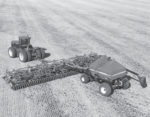Gigantic Planter Delivering No-Till To Australian Farming
On a continent where equipment is said to have lagged behind advances in cropping practices, one manufacturer is looking to convert the land to no-till in a very big way.
Read More










